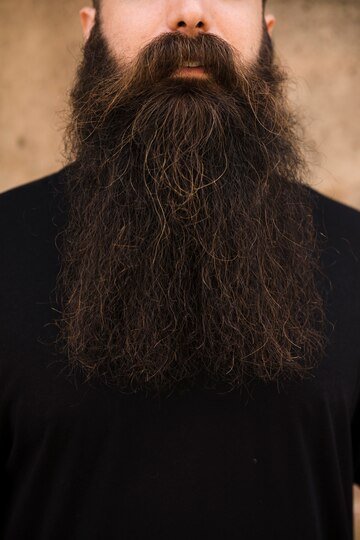The majority of men have itchy beards. For some, the itchiness is normal, while for others, it’s more problematic. For me, it is most irritating in the summer when I am out for work. Testosterone, a hormone, plays a big role here, making your beard hair thicker and grow faster. But that can also lead to some annoying itchiness. Your beard may itch due to factors like shaving, dry skin, or hairs growing back inside. In this guide, I’ll break it down and figure out what’s causing that scratchy feeling and also will show you easy ways to deal with that itch. I’ll cover everything from basic grooming tips to special tricks for keeping your beard happy and healthy. So join me to bid the itching farewell and hello to a smoother, happier beard journey, regardless of how experienced you are with growing beards.
Table of Contents
Toggle
Causes Of Itchy Beard
Understanding the causes of an itchy beard can help you take the right steps to alleviate the discomfort. So let’s know the causes of the itchy beard.
Ingrown Hair
Shaved or cut hairs that grow back into the skin rather than out are known as ingrown hairs. This is the most prevalent cause of itching in your beard. It’s more common with curly hair. The areas where you shaved may become red, bumpy, itchy, and occasionally painful. To prevent ingrown hairs, keep your skin clean, exfoliate regularly, and make sure your shaving tools are clean.
Dry Skin
Dry skin can make your beard itch. It happens because of things like cold weather, genetics, certain medications, and skin conditions like eczema or psoriasis. Your skin may become dry due to the use of harsh soaps or shampoos. When your skin gets dry, it can lead to dandruff and irritation under your beard. Using mild treatments and keeping your skin hydrated will help reduce itching.
Folliculitis
The cause of folliculitis is inflammation of the hair follicles in the facial hair region. This can happen because of infections from bacteria, viruses, fungi, or parasites, or when hairs grow back into the skin, causing clogs. It shows up as red, tender bumps that might have pus. Keeping your skin clean and avoiding ingrown hairs can help prevent folliculitis and the itchiness that comes with it.
Pseudofolliculitis Barbae
Pseudofolliculitis barbae is a condition where facial hairs grow back into the skin, causing inflammation and razor bumps, especially after shaving. It’s common in people with curly hair, especially Black males. When the hair cuts or curves the skin inside the follicle, this occurs. It can lead to itchy, painful bumps and sometimes infections. Unlike folliculitis, it’s not caused by infection. Using proper shaving techniques and products can help prevent this condition and reduce itchiness.
Tinea Barbae
The fungus known as dermatophyte is the source of tinea barbae, a fungal infection that affects the facial hair region. It shows up as red, inflamed, and crusty skin around the mouth, cheeks, and chin. This infection can also lead to itching. Think of it like ringworm but on your face. If you notice these symptoms, it’s important to see a doctor for proper treatment to soothe the itchiness and clear up the infection.
Seborrheic Dermatitis
When seborrheic dermatitis affects the scalp, it generates red, flaky skin that is generally referred to as dandruff. In addition, it might happen to the face and beard, particularly if you have oily skin. Red skin and yellow, oily scales are among the symptoms. If you notice these signs, using anti-dandruff shampoos can help manage the condition and alleviate itchiness.
Note that, whether it’s due to ingrown hairs, dry skin, folliculitis, pseudofolliculitis barbae, tinea barbae, or seborrheic dermatitis, proper skin and beard care can make a significant difference. Keep your skin clean, moisturized, and use appropriate products to enjoy a healthy, itch-free beard. If issues persist, consult a healthcare professional for further advice.
Dealing With Itchy Beard
Dealing with the itchiness that comes with growing a beard doesn’t have to be a daunting task. By following simple yet effective grooming practices, you can maintain a clean, healthy, and itch-free beard.
Maintaining Hygiene
To prevent itching, it’s crucial to keep your beard clean. When your beard gets oily and dirty, it can lead to bacteria and acne, making the itch worse. Thus, use a mild cleanser to wash your face and beard on a frequent basis. Also, use products made specifically for beards to keep them clean and healthy. Oh, and don’t forget to wipe away sweat throughout the day to keep things fresh.
Keeping Your Beard Clean
In order to avoid irritation and itching, you must keep your beard clean. Beards easily collect dirt, dead skin, and food particles, which can lead to irritation and itching if left unchecked. Make sure to give your beard a mild wash on a regular basis to prevent this. This simple step helps keep your beard and skin clean, leaving you feeling fresh and itch-free.
Drying Properly
You must properly dry your beard in order to put an end to itching. When you leave water in your beard, it can dry out your skin and make the itch worse. After washing, gently pat your beard dry with a clean towel, making sure to get rid of any excess water. Avoid being too rough, as it can damage your hair. To complete the task and maintain a clean, fresh-smelling beard, you can even use a hair dryer set to a low heat.
Combing And Grooming Regularly
It’s crucial to regularly brush and style your beard in order to maintain its nice appearance and pleasant feel. It helps control those wild, frizzy hairs that can scratch and irritate your skin. Plus, combing stimulates hair growth and removes any loose hairs that could cause irritation. Make it a practice to brush your beard every morning and evening with a beard brush or comb. This simple step keeps your beard clean, itch-free, and looking its best.
Trimming Whenever Necessary
Keeping your beard trimmed is essential for both looks and comfort. Overgrown beards can attract bacteria and make you sweat more, leading to itchiness. So, whenever your beard starts looking unruly, give it a trim. Use a quality trimmer with gentle strokes, starting with a longer length to play it safe. And if you decide to shave, make sure your blade is clean to avoid further irritation. With a little trimming, you can keep your beard neat, tidy, and itch-free.
Remember, with patience and care, you can enjoy a smoother, happier beard journey. So, embrace the process, stick to your grooming routine, and say goodbye to the itch for good.



